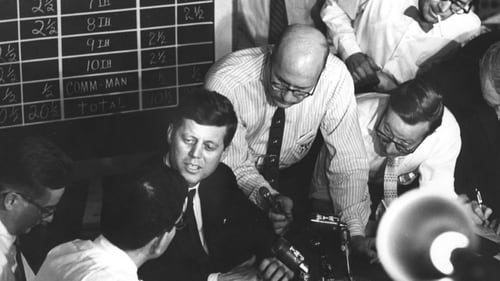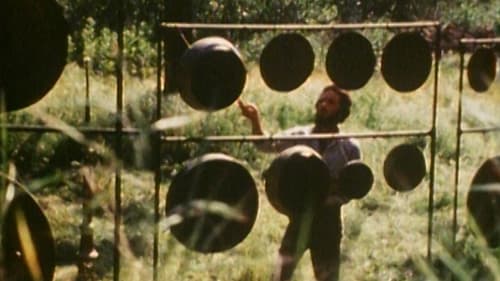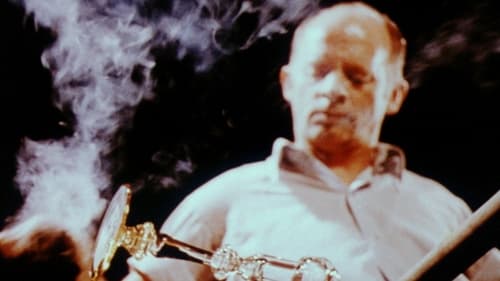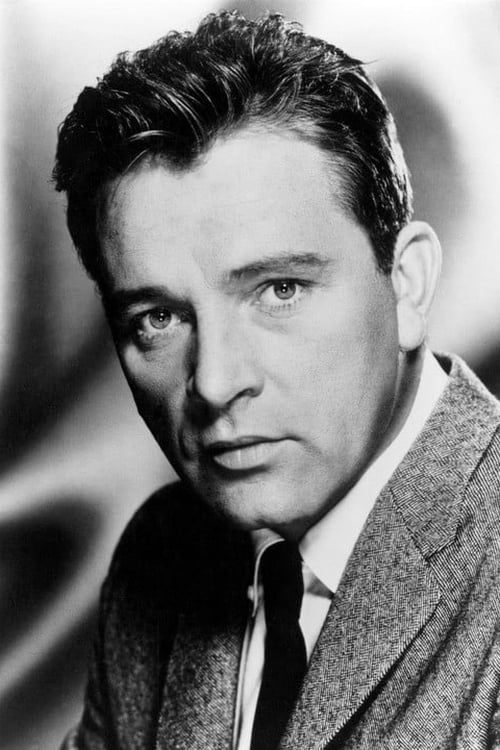A Tribute to Dylan Thomas (1961)
장르 : 다큐멘터리
상영시간 : 30분
연출 : Jack Howells
시놉시스
An atmospheric tribute to the genius of Welsh poet and dramatist Dylan Thomas, using many of the windswept locations where Thomas himself grew up and found his inspiration. The film is hosted/presented by Richard Burton, Thomas's friend, who narrates the story and appears from time to time amidst the Welsh landscape. Burton had already appeared in Douglas Cleverdon's acclaimed BBC radio dramatization of Thomas's 'play for voices' Under Milk Wood in the 1950s and, in the early Seventies, would appear in director Andrew Sinclair's film version as First Voice. Preserved by the Academy Film Archive in partnership with The Film Foundation and National Screen and Sound Archive of Wales in 2000.

A look at the daily business of U.S. President John F. Kennedy, with a focus on some of the political issues he faces six weeks into his term.

This film, photographed and edited by Les Blank, produced and directed by Pieter Van Deusen, documents a spontaneously improvised concert by musician Christopher Tree. With his one-man orchestra, including 40 Tibetan temple gongs, flutes, tympani and wind chimes, Christopher Tree whirls and weaves his sound tapestry within a pristine forest.

Featuring the stories and music of seminal Cajun musicians "Bois Sec" Ardoin and Canray Fontenot, Dry Wood is a short, vibrant documentary portrait of life, food, music and festivity in the Louisiana Delta from the singular Les Blank. Preserved by the Academy Film Archive in 1999.

Academy Award nominated short film.

City of Wax is a 1934 American short documentary film produced by Horace and Stacy Woodard about the life of a bee. It won the Oscar at the 7th Academy Awards in 1935 for Best Short Subject (Novelty).

An experimental film poem in celebration of life and visions. Techniques include live action, animation, montage and found images.

Aztec romance and the dream of love. The anthropologist’s most human desire, the ultimate contact with the informant. The denial of intellectualism and the acceptance of the romantic heart, and a soul without innocence.

Busy Little Bears is a 1939 American short family film directed by John A. Haeseler. The film follows three bear cubs are observed exploring the forests of the Sierra Nevadas, encountering other wildlife, and invading the kitchen of a local ranch house. It won an Oscar at the 12th Academy Awards in 1940 for Best Short Subject (One-Reel).

Hymn of the Nations, originally titled Arturo Toscanini: Hymn of the Nations, is a 1944 film directed by Alexander Hammid, which features the "Inno delle nazioni," a patriotic work for tenor soloist, chorus, and orchestra, composed by Italian opera composer Giuseppe Verdi in the early 1860s. (For this musical work, Verdi utilized the national anthems of several European nations.) In December 1943, Arturo Toscanini filmed a performance of this music for inclusion in an Office of War Information documentary about the role of Italian-Americans in aiding the Allies during World War II. Toscanini added a bridge passage to include arrangements of "The Star-Spangled Banner" for the United States and "The Internationale" for the Soviet Union and the Italian partisans. Joining Toscanini in the filmed performance in NBC Studio 8-H, were tenor Jan Peerce, the Westminster Choir, and the NBC Symphony Orchestra. The film also included the overture to Verdi's opera La Forza del Destino.

Brooklyn, U.S.A. is a 1947 English language short film directed by Arthur Cohen, starring Ted de Corsia. It was nominated for an Oscar in the category of Best Short Subject, One-Reel.

A documentary abstraction recorded at night in Los Angeles backed by the music of Stockhausen. It is a preliminary effort to organise camera and audio images through a cybernetic editing model and a digital computer.

The film explains the French Revolution of 1848. Bernard Blier's narration is supported by pictures once drawn by contemporary artists including Honoré Daumier. Preserved by the Academy Film Archive in 2010.

Strand spent over twenty years documenting her friend Anselmo Aguascalientes’ life, eventually creating a stunning trilogy of films—Anselmo, Cosas de mi vida, and Anselmo and the Women—tender portraits that are also glimpses into poverty, resourcefulness, perseverance and patriarchy.

Impressionistic picture of the Third Avenue Elevated Railway in Manhattan, New York City, before it was demolished. Preserved by the Academy Film Archive in 2010.

While at his workshop in Puerto Rico, Pablo Casals prepares to conduct a Bach suite for a concert performance. Oscar Winner for the category "Best Short Subject, Live Action Subjects"

Children Without is a 1964 American short documentary film directed by Charles Guggenheim, about a young girl and her brother growing up in the housing projects of Detroit. It was nominated for an Academy Award for Best Documentary Short.

Background is a 1973 American short documentary film directed by Carmen D'Avino. It was nominated for an Academy Award for Best Documentary Short.

An Oscar-nominated film with no narration showing the Exploratorium (The Palace of Arts and Science) in San Francisco. It shows many of the exhibits and the reaction of visitors to many of these. Preserved by the Academy Film Archive.

Conquest of Light is a 1975 short documentary directed and produced by Louis Marcus. It is an examination of the processes used to make Waterford crystal in Ireland. The clear crystal shapes of glass created by the craftsmen of Waterford are designed to capture the iridescence of light. From the intense heat of the furnace at the glass works in the Irish city of Waterford comes the crystal, blown by mouth and cut by hand, that is treasured over most of the world. The camera follows the liquid glass as it is blown into the shape of bowls, goblets, vases and many other forms, then cut and etched with great deftness and precision, producing the splendid examples of glass art for which the craftsmen at Waterford are famous. The film was nominated for an Oscar for Best Live Action Short Film.

This film is an account of the Talyllyn Railway, a historic narrow-gauge slate carrier in Tywyn, Wales, and its operation by a preservation society who saved it from being sold for scrap. Although the release date is 1965, it was actually filmed in the early 1950s. Preserved by the Academy Film Archive in 2012.






